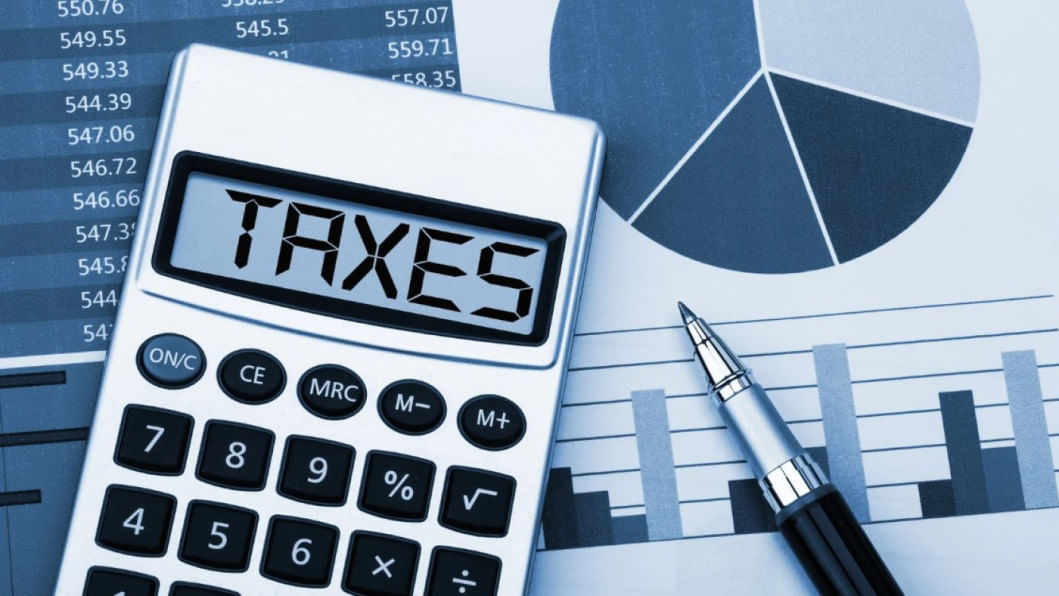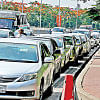How Bangladesh’s surcharge and wealth tax system works

Bangladesh's tax structure has become much more dynamic in recent years. To ensure that the wealthiest citizens contribute their fair share to national development, the government has introduced a surcharge system — essentially an "extra tax" based on one's wealth or specific conditions. In simple terms: "The more you own, the more you pay."
According to the Income Tax Act 2023 and the Finance Ordinance 2025, there are three main types of surcharges in Bangladesh: Wealth surcharge, environmental surcharge, and special surcharge.
These aren't just about collecting extra revenue; they're tools for maintaining social balance, promoting environmental awareness, and ensuring fairness in the tax system.
Wealth surcharge: the richer you are, the more you pay
A resident individual is required to pay a Wealth Surcharge, in addition to regular income tax, if any of the following conditions apply: their net wealth (total assets minus liabilities) exceeds Tk 4 crore, they own more than one motor vehicle, or they own a residential property with a total floor area exceeding 8,000 square feet.
Under Section 167 of the Income Tax Act 2023, net wealth means the amount shown in the wealth statement after deducting liabilities from total assets.
The surcharge is calculated on the tax payable, not directly on total income. This means the taxpayer's income tax is first determined, and then the surcharge is added based on the applicable rate in Schedules 2 and 3 of the Finance Ordinance 2025.
For the 2025-26 tax year, the minimum tax will be considered when calculating the surcharge. From 2026-27 onward, however, the minimum tax will not form part of the surcharge base.
Wealth Surcharge for 2025-2026 Assessment Year
The surcharge on net wealth is applied progressively based on the taxpayer's total net assets and certain ownership conditions. Individuals with a net wealth of up to Tk 4 crore are exempt from any surcharge.
However, if a person's net wealth exceeds Tk 4 crore but does not surpass Tk 10 crore, or if they own more than one car or possess over 8,000 square feet of residential property, a 10% surcharge applies.
For those whose net wealth falls between Tk 10 crore and Tk 20 crore, the surcharge increases to 20%. It rises further to 30% for net wealth between Tk 20 crore and Tk 50 crore, and finally, individuals with wealth exceeding Tk 50 crore are subject to the highest surcharge rate of 35%.
Environmental Surcharge: Paying the Price for Pollution
If an individual owns more than one motor vehicle, they must pay an environmental surcharge for each additional vehicle.
This applies to vehicles such as cars, jeeps, buses, minibuses, trucks, pickups, etc., but not to motorcycles, auto-rickshaws, or human haulers. From the 2026-27 tax year, electric vehicles (EVs) will be exempt from environmental surcharge — a clear incentive for greener transport.
Key Rules in Applying Environmental Surcharges
When a person owns multiple vehicles, the environmental surcharge must be paid for all vehicles except the one subject to the lowest rate.
The registration or fitness renewal authority will collect this surcharge directly at the time of registration or renewal. If a vehicle's registration or fitness is renewed for multiple years, the surcharge for each following fiscal year must be paid by June of that year.
Failure to pay the surcharge on time will result in recalculation, combining both unpaid surcharges from previous years and the surcharge due for the current year.
In cases where the surcharge remains unpaid before filing the annual income tax return, the deputy commissioner of taxes will recover it during the tax return processing or assessment. This environmental surcharge is non-refundable and cannot be adjusted or offset against any other tax or surcharge.
Rates of Environmental Surcharge for AY 2025-2026, 2026-27, and AY 2027-28
For the assessment years (AY) 2025-2026, 2026-2027, and 2027-2028, the environmental surcharge in Bangladesh is levied based on the engine capacity or power of motor vehicles.
The surcharge starts at Tk 25,000 for vehicles with engines up to 1500 cc or 75 kW. For vehicles with engine capacities between 1500 cc and 2000 cc (or 75-100 kW), the surcharge is Tk 50,000.
This increases to Tk 75,000 for engines ranging from 2000 cc to 2500 cc (or 100-125 kW), and Tk 150,000 for vehicles between 2500 cc and 3000 cc (or 125-150 kW).
Cars with engine capacities from 3000 cc to 3500 cc (or 150-175 kW) are subject to an environmental surcharge of Tk 200,000. For high-powered vehicles exceeding 3500 cc or 175 kW, the surcharge reaches its peak at Tk 350,000.
Special Surcharge: Targeting Tobacco and Accessibility Gaps
A special surcharge of 2.5% applies in two main cases.
First, manufacturers of tobacco products, such as cigarettes, bidis, zarda, gul, and other similar items, must pay a 2.5% surcharge on the income derived from those businesses.
Second, any school, college, or university that fails to ensure accessibility for persons with disabilities in accordance with national laws is also required to pay a 2.5% surcharge on its income.
Why These Surcharges Matter
The underlying philosophy behind these surcharges is straightforward: those with greater wealth or higher consumption must contribute more. It's about more than just taxation; it's a statement of values.
The system seeks to bridge social inequality, fund development, and reward environmentally conscious choices.
For high-net-worth individuals, multiple vehicle owners, or businesses falling under these rules, the message is clear: file accurately and on time.
Ensure that all surcharge payments and documentation are properly submitted with income tax returns. Ignoring surcharge obligations could result in penalties, interest, or processing delays — consequences few taxpayers can afford to overlook.

 For all latest news, follow The Daily Star's Google News channel.
For all latest news, follow The Daily Star's Google News channel. 







Comments